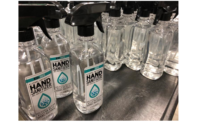Intelligent Labor is the New Normal

Labor shortage is fast becoming the next significant problem for the supply chain. Many frontline warehouse employees fall into the category of shift workers who have yet to return to the workforce, even as the economy bounces back and the demand for workers still continues to climb. While these critical jobs remain difficult to fill, employers are focusing on optimizing the labor force they have and introducing incentives and employee recognition programs to keep the team they do have engaged and happy.
A particularly painful category of workers that’s in short-supply and high demand is supply-chain planners. Now, in addition to having to manage the current logistics issues and shortages, employers are having to figure out how to fill the position that would have traditionally helped alleviate some of these bottlenecks or re-allocate duties to current employees who are likely already overworked. With job openings close to a 20-year high, supply chains are struggling to keep up with a new boom in consumer demand. 1
The labor shortage within the supply chain will ultimately end up costing manufacturers and the end customer more money as distribution teams continue to be backlogged and understaffed. While manufacturers and suppliers work to hire and train as quickly as possible, many are utilizing supply chain visibility tools to alleviate the strain of labor shortages within operations. With much of the strain falling on frontline employees, real-time warehouse visibility is more important than ever.
Industries Where Labor Shortages are Having the Greatest Impact
Several companies, from fast food chains like Chipotle Mexican Grill, Inc. to chicken producer Pilgrim’s Pride Corp., and MGM Resorts International say they can’t find or even attract enough workers. 2 In addition to the hospitality and warehousing industry suffering labor shortages, the automotive industry is also experiencing their own shortages due to reduced demand due to the chip crisis. 3 Short-term shutdowns to sanitize facilities combined with difficulties hiring workers continues to cause strain and slow down growth for manufacturing. 4 Because of this, many companies are now turning to labor management visibility for a better understanding of how to utilize their existing workforce more efficiently.
Labor Management Solutions Produce Measured Success
When short-staffed, it’s imperative to make smart decisions about the different tasks and activities being allocated to each employee inside the warehouse. Incorporating a warehouse visibility tool focused on labor management allows employers to see how the workforce is performing at the company, region, warehouse, shift or any other level defined in real time. Having the ability to drill-down into the metrics and pinpoint measured versus unmeasured work issues helps identify the next steps needed to optimize labor utilization and productivity.
Having a labor management visibility solution in place also provides real-time insight into those employees that are going above and beyond their assigned job functions. Employee recognition, pay for performance and high-performance incentives for employees is more important than ever before to keep the existing workforce satisfied as well as engaged with their work.
In a recent Rebus by Longbow customer case study, it was reported that the implementation of a labor management visibility solution enabled labor sharing across multiple sites, which reduced the need for two full-time equivalent employees per site as well as most of the overtime hours. This ultimately equated to 9% in labor savings equating to $1.3 million. 5
Intelligent Labor is the New Normal
In the era of the “New Normal”, many of the former workforce remains unable to return to work due to health fears or the inability to find child or elder care. Because of this, it’s more important more than ever to utilize warehouse visibility and labor management tools to optimize productivity. The important thing to remember is to find an appropriate labor management system that is built for measuring tasks on the floor, not just reporting on them.
With this enhanced real-time visibility, warehouse operators will be able to see where they can reallocate their labor force on the spot to maximize daily supply shipments in order to fulfill more orders each day.
Looking for a reprint of this article?
From high-res PDFs to custom plaques, order your copy today!







